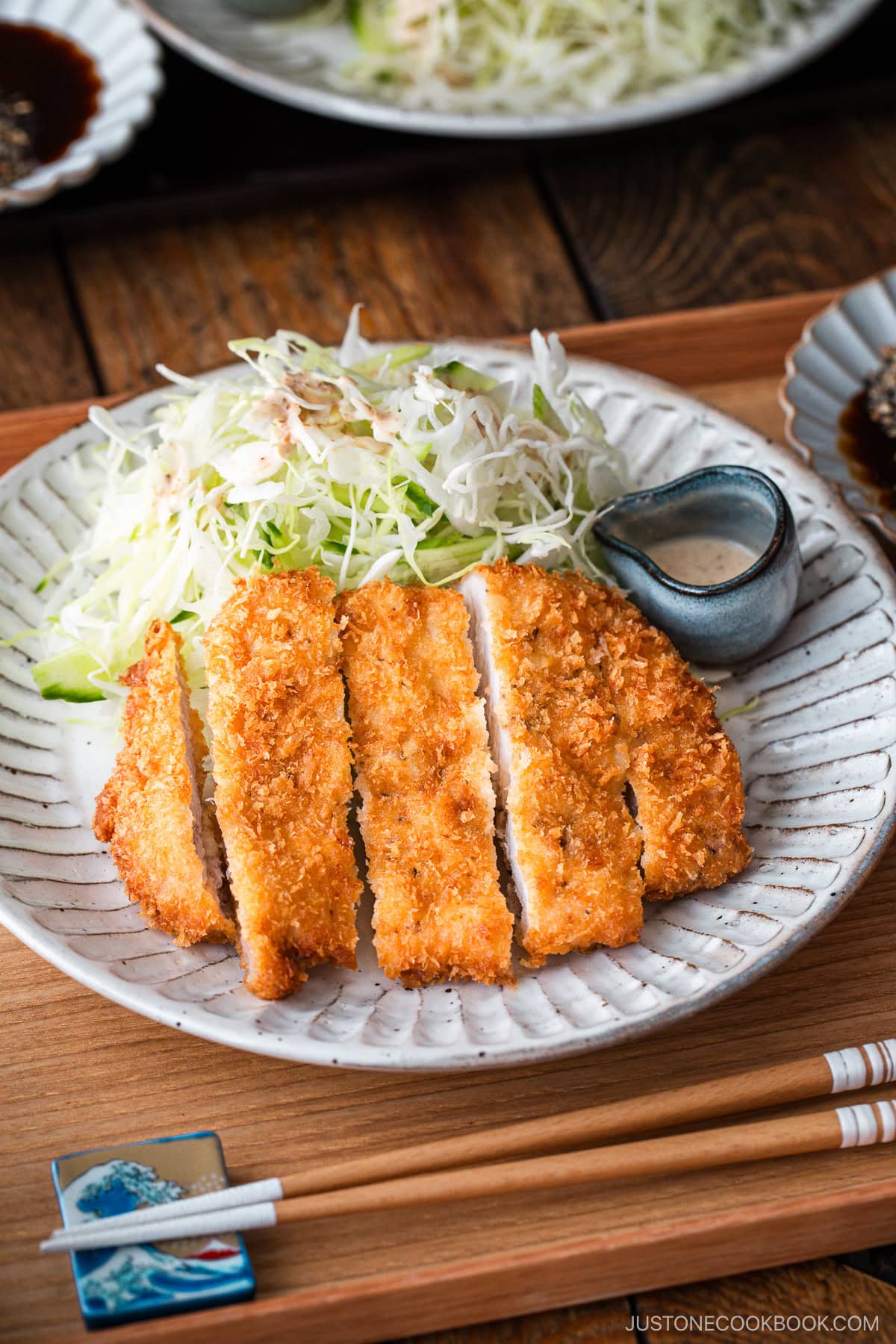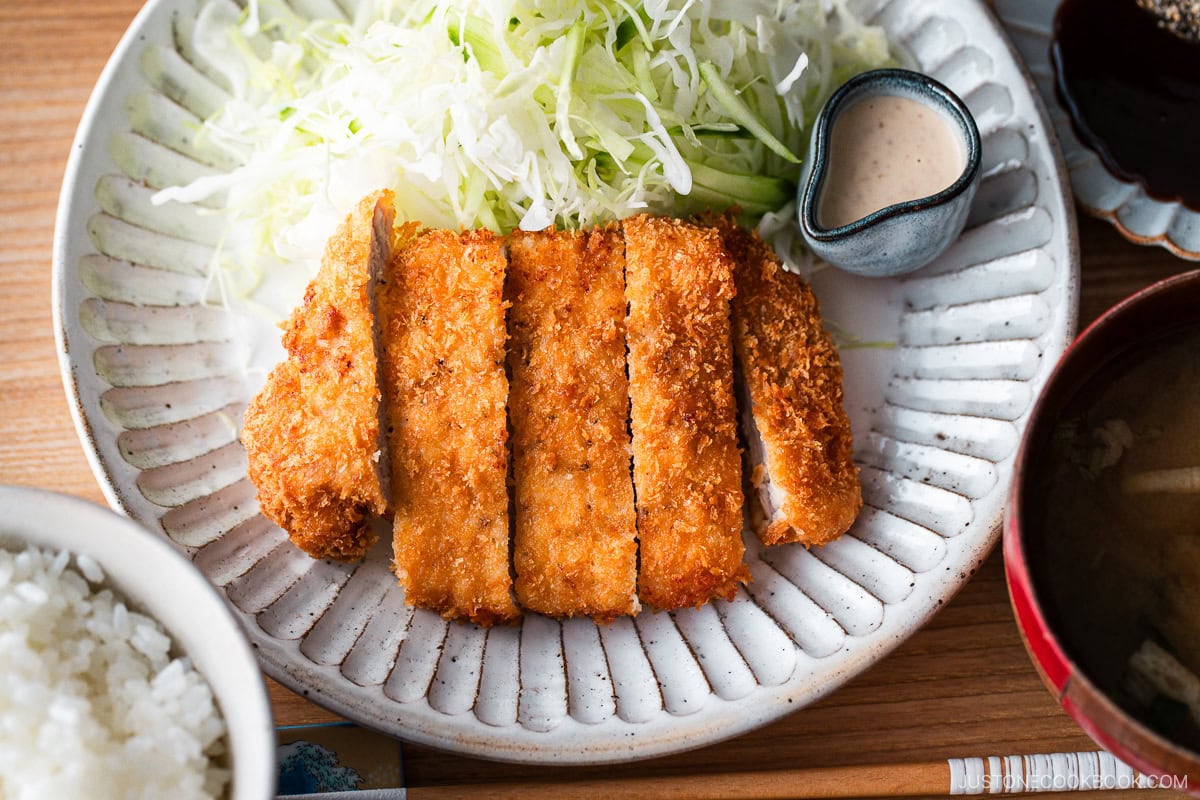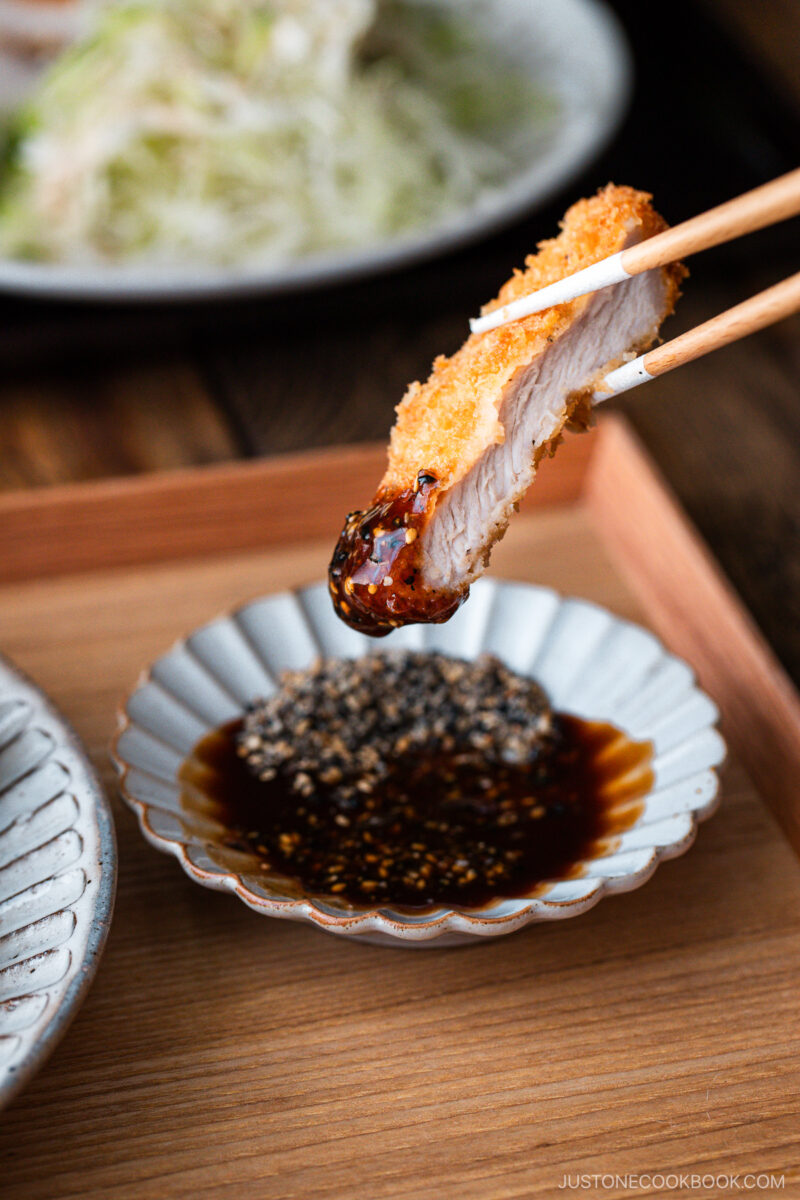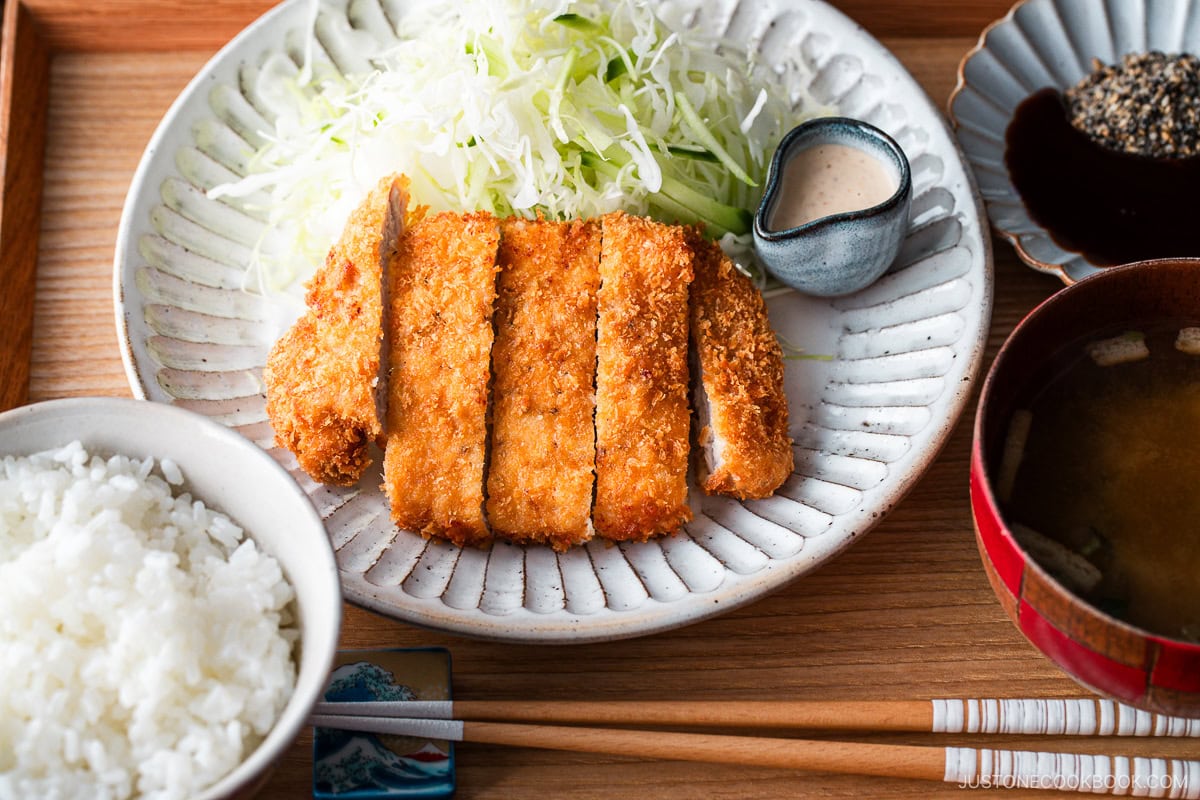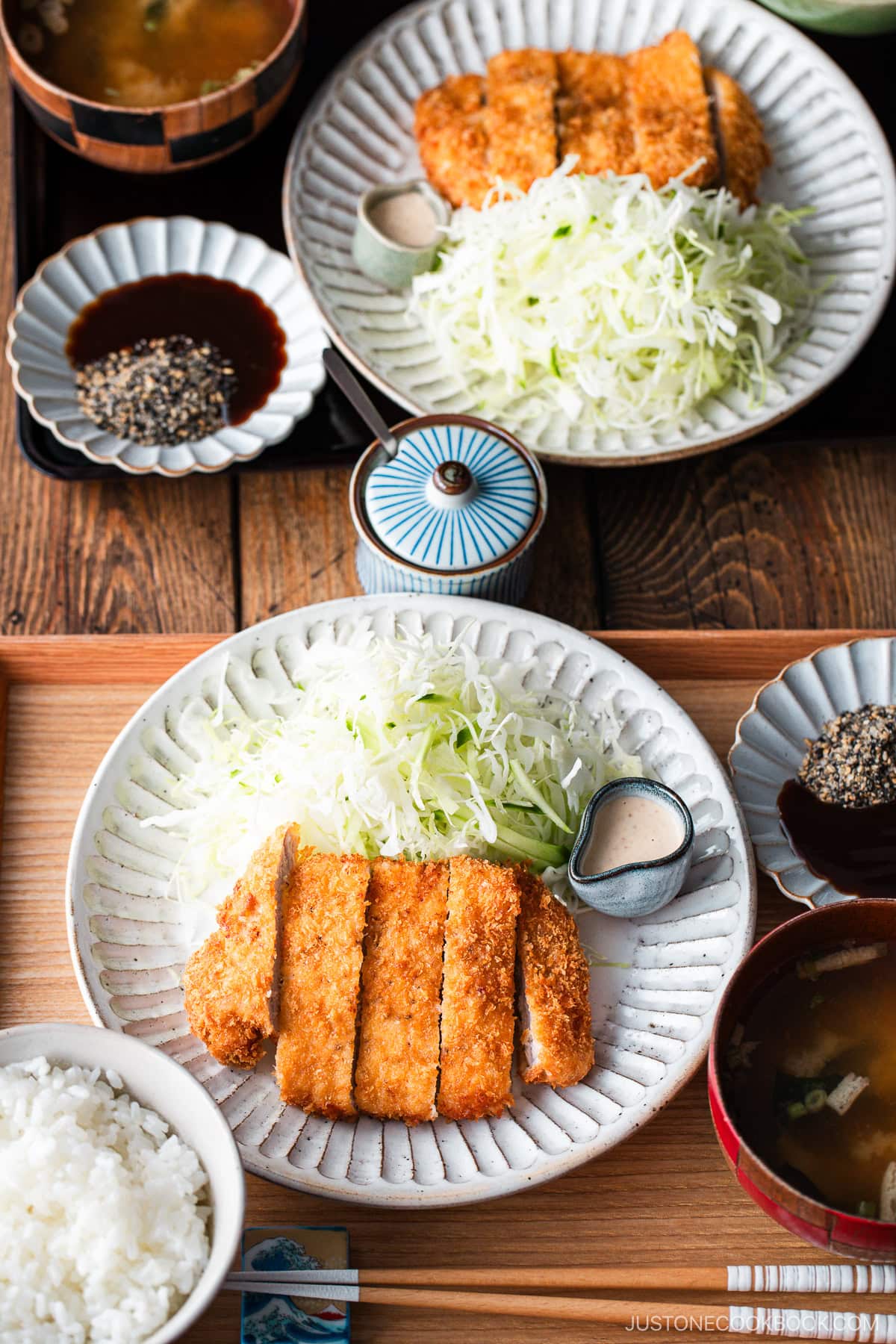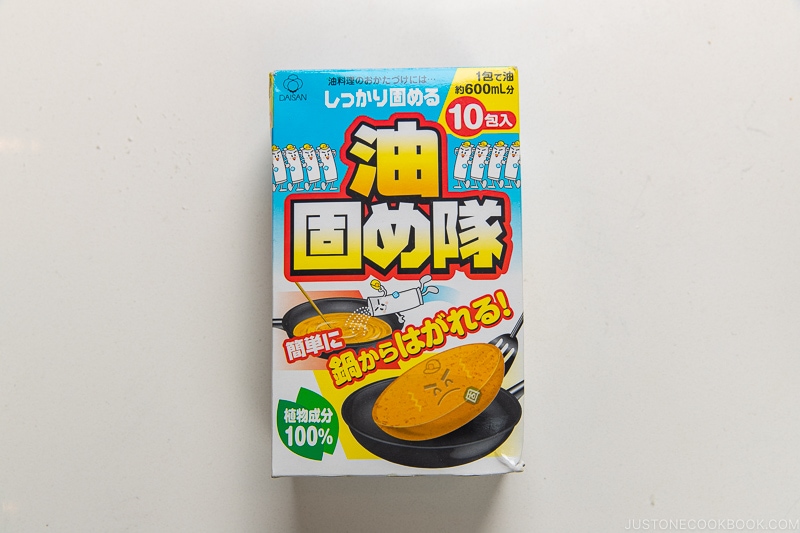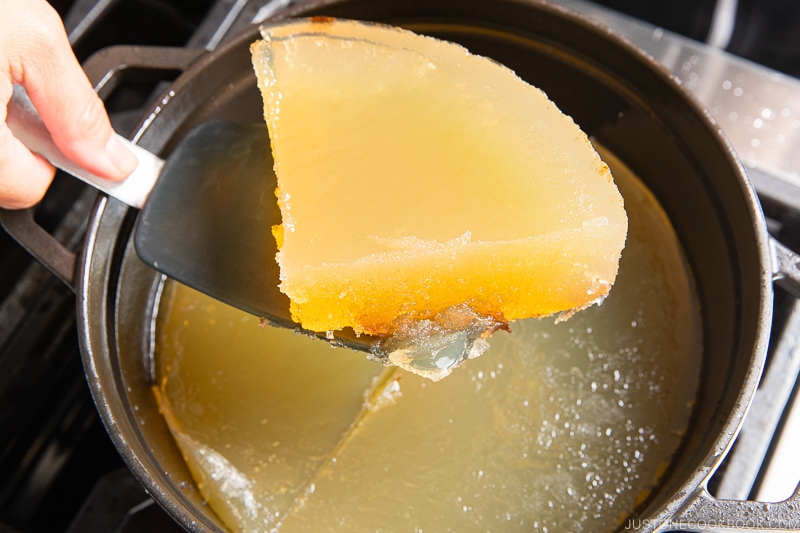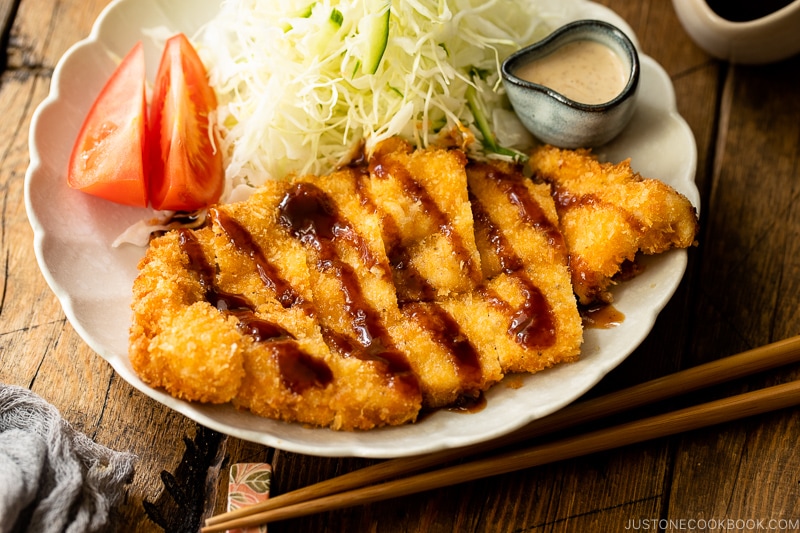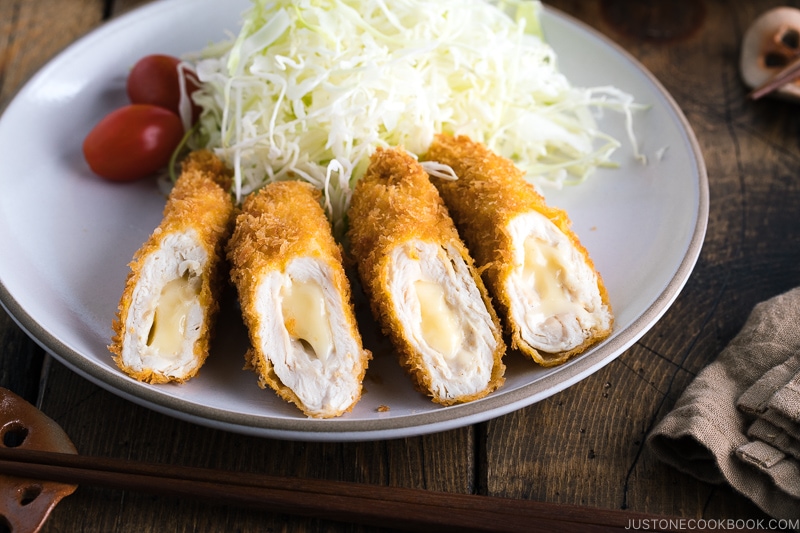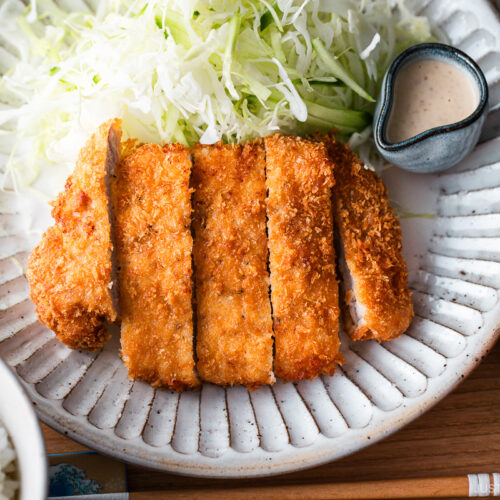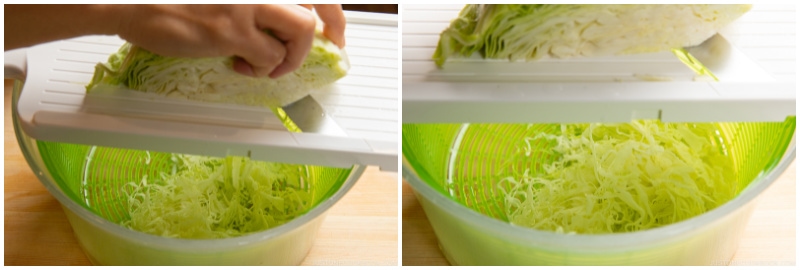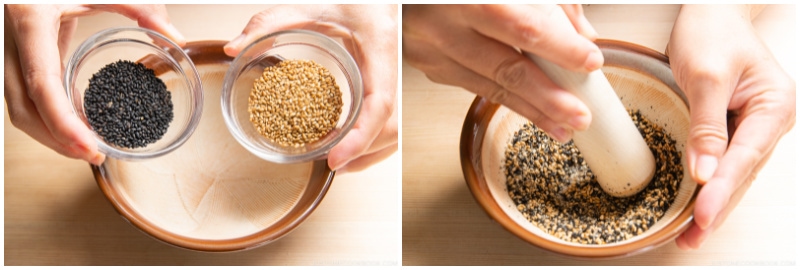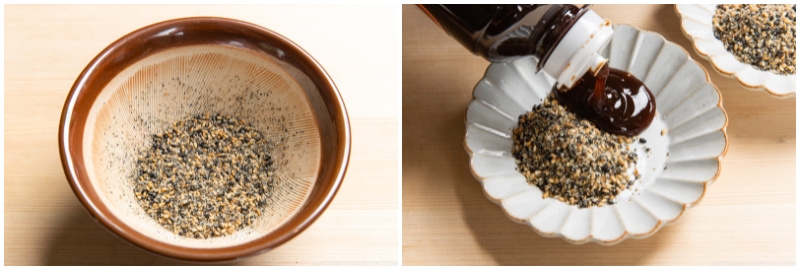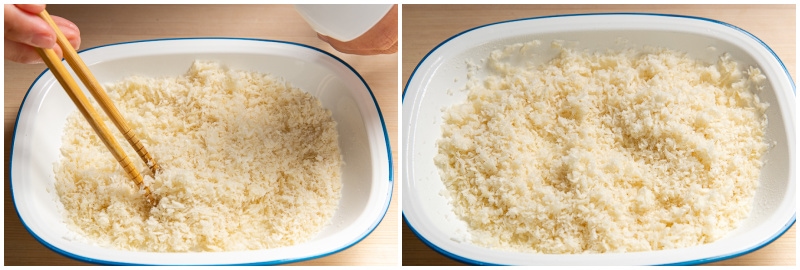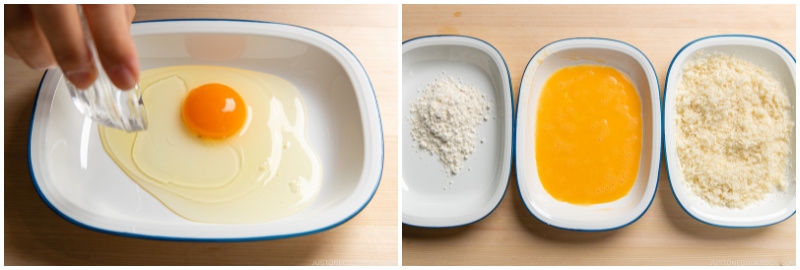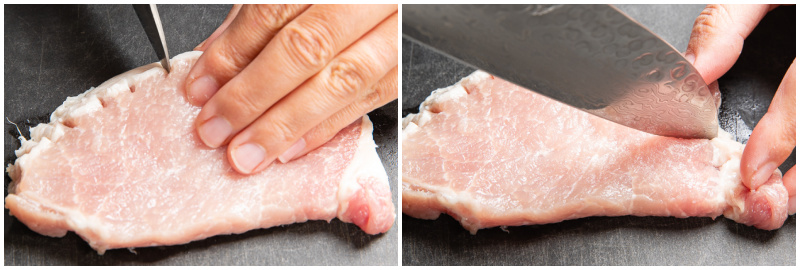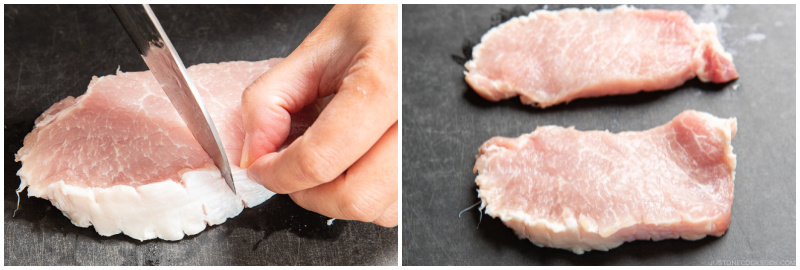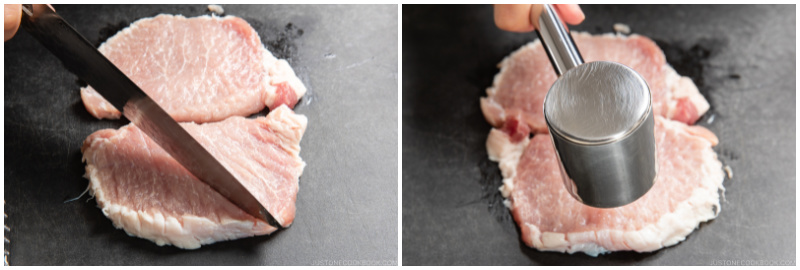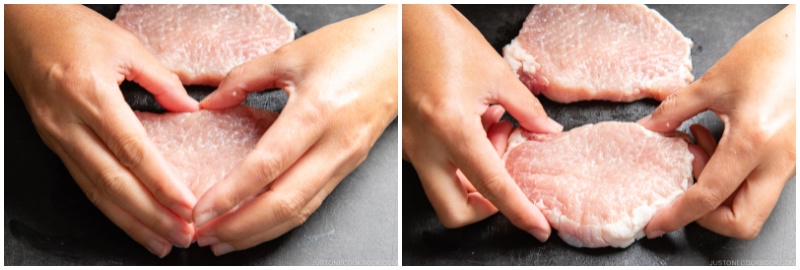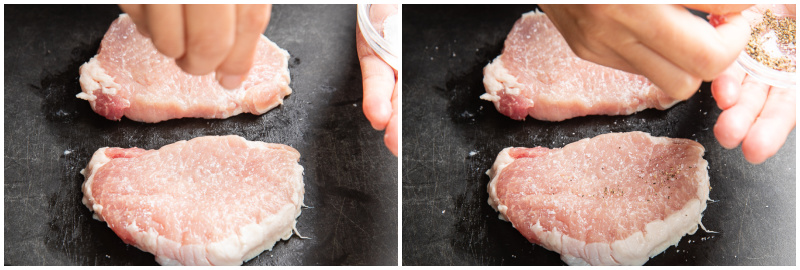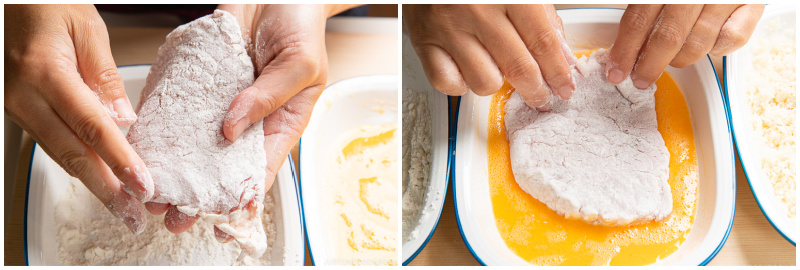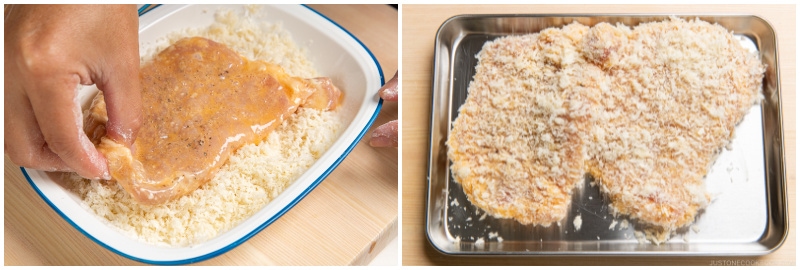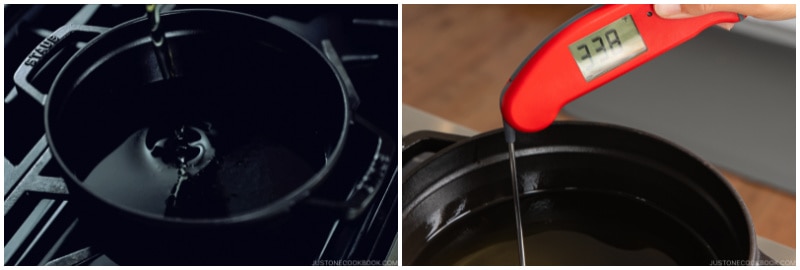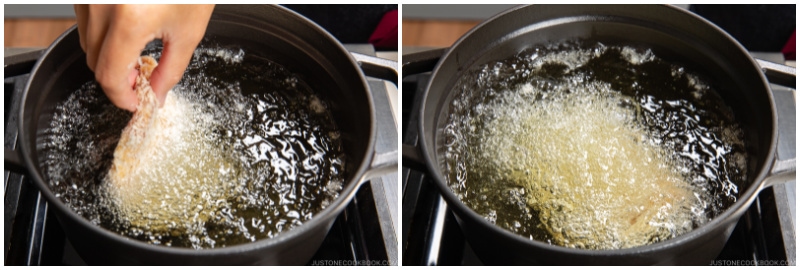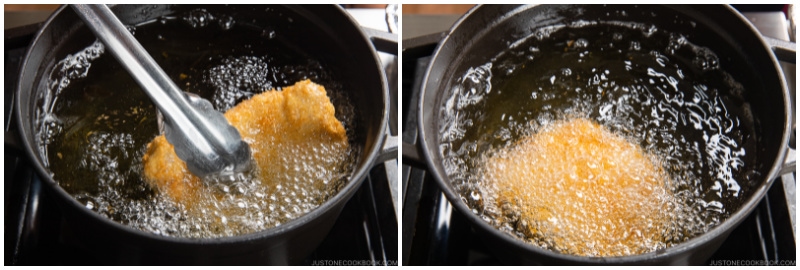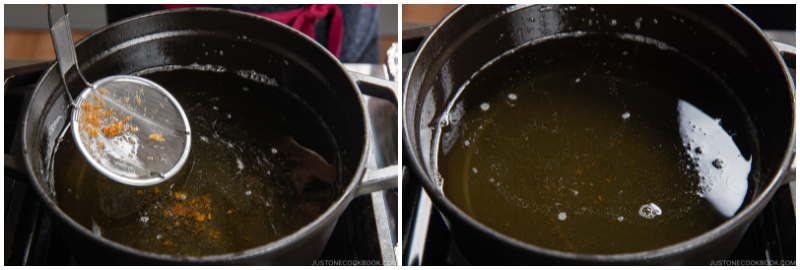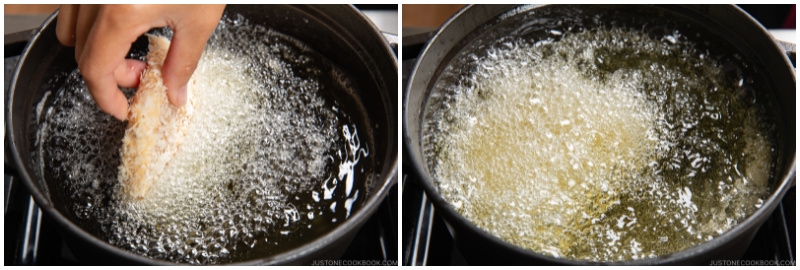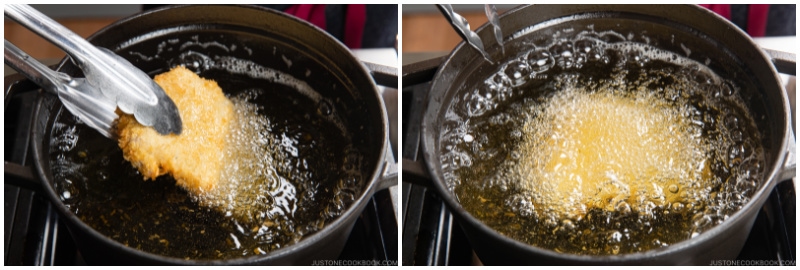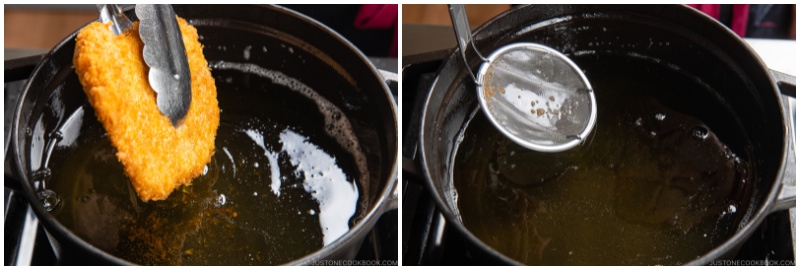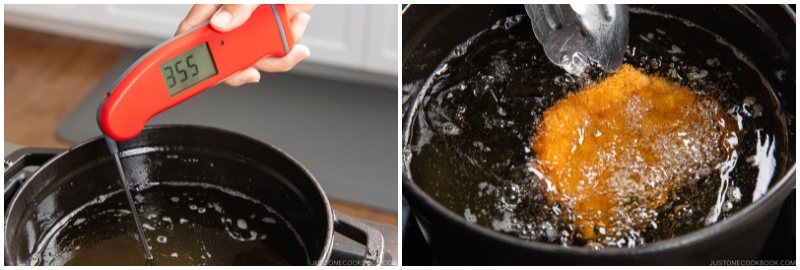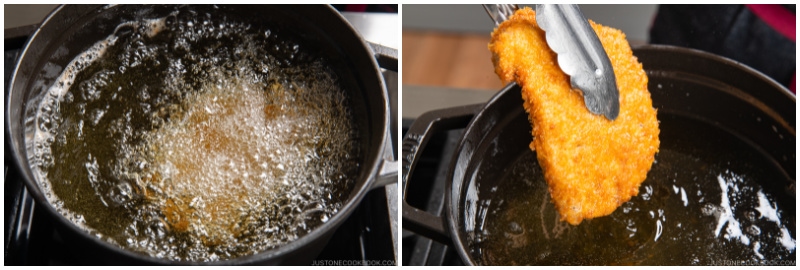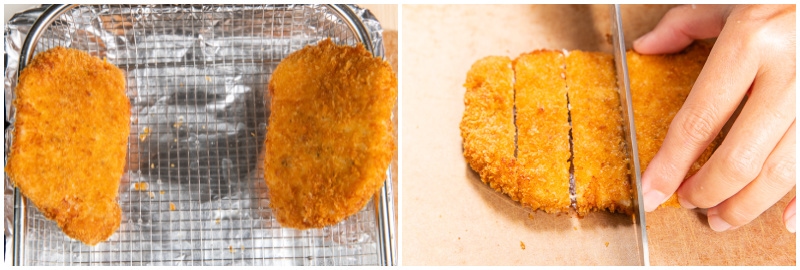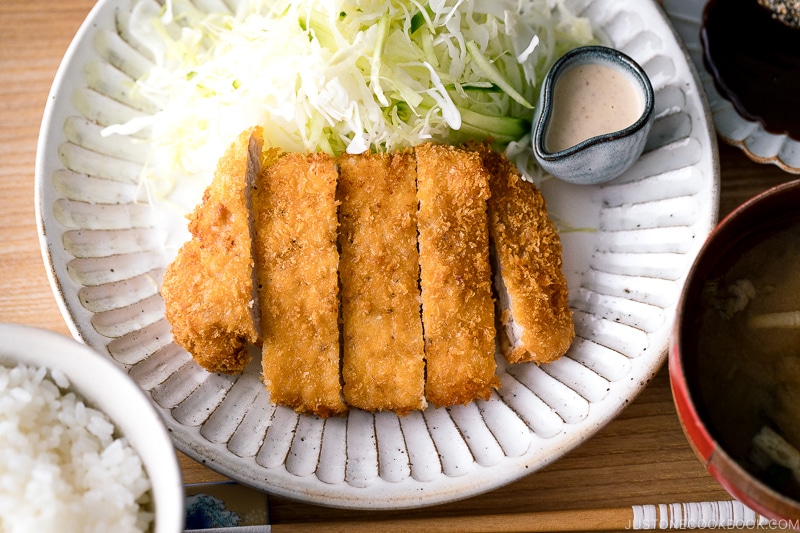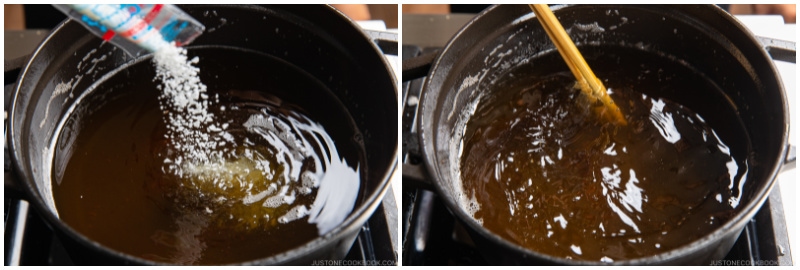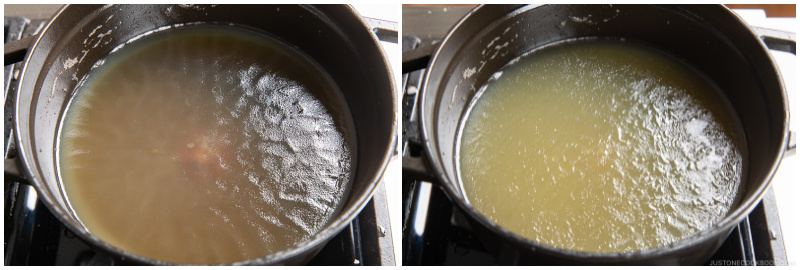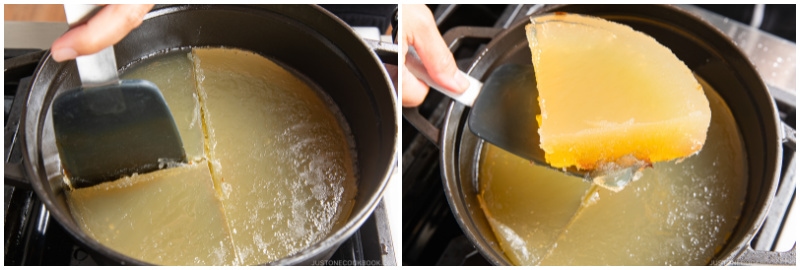We have a specialty in Japan known as tonkatsu (とんかつ, 豚かつ) or deep-fried pork cutlet. We’ve enjoyed this Western-inspired dish for more than 120 years and it’s now one of the most popular Japanese dishes around the world! What makes tonkatsu so special, and how can we make this popular dish at home? It’s easier than you think. In this recipe, I’ll share my secrets for an airy and supercrisp crust that’s succulent and tender inside. This homemade Tonkatsu is my family‘s favorite!
What is Tonkatsu?
Tonkatsu is tender pork loin that’s breaded and deep-fried to crunchy perfection. The word ton (豚) comes from “pork” while katsu (カツ) is an abbreviation of katsuretsu (カツレツ), derived from the word “cutlet.” When the recipe for fried cutlets first appeared in the 1870s, they were made mainly with beef. Inspired by the French veal cutlet côtelette de veau, one Tokyo restaurant called Rengatei (煉瓦亭, still open today!) made a few changes to this concept to suit the Japanese palate. In 1899, tonkatsu made its debut with pork replacing beef and exploded in popularity in the early 20th century. Like other popular foods in Japan (think ramen, tempura, and soba), there are specialty restaurants that exclusively serve tonkatsu. You’ll often find it presented as a set meal with rice, miso soup, shredded cabbage, and sometimes wedges of tomatoes.
What Makes Tonkatsu Special?
Tonkatsu may seem like other popular fried cutlet dishes such as German schnitzel, Polish kotlet schabowy, and Italian piccata. What makes the Japanese pork cutlet different?
Breading – Tonkatsu uses panko (パン粉), a Japanese-style breadcrumb made from fluffy Japanese milk bread without the crust. Panko flakes are larger than standard breadcrumbs that are finely ground and rather stale. Panko absorbs less oil when fried and makes an airy, crisp coating (like tempura) that doesn’t feel heavy.
Deep-frying – Instead of pan-frying which can result in tough and greasy meat, deep-frying gives the pork a crispy outside and juicy center that is now a key characteristic of the dish.
Sauce – You can’t enjoy tonkatsu without sweet and tangy tonkatsu sauce drizzled on top! You may know this brown sauce from the popular Bulldog brand that you can find in most Asian grocery stores. If you’d like to try a homemade version, check out my recipe.
Cabbage – Tonkatsu is almost always served with a heaping pile of raw, finely shredded cabbage. My mom often says we need to eat twice as much vegetables as protein for a balanced meal. Fresh cabbage in between bites of crispy fried tonkatsu is refreshing while still providing that satisfying crunch! I like to enjoy it with my homemade sesame dressing.
Ingredients You’ll Need for Tonkatsu
pork loin or fillet – typically pork loin (ロース, rōsu) or tenderloin/fillet (ヒレ, hire); use pork loin for its layer of fat that gives an extra tender bite; traditional tonkatsu does not use pork chops salt and black pepper flour egg panko bread crumbs – use a Japanese brand of panko, as non-Japanese brands are not the same neutral-flavored oil – for deep-frying tonkatsu sauce – tonkatsu sauce – store-bought or make my homemade tonkatsu sauce with Worcestershire sauce, ketchup, oyster sauce, and sugar (it does not include soy sauce) black and white sesame seeds – optional, for my sesame tonkatsu dipping sauce (see the recipe below)
How to Make Tonkatsu
With a prep time of 15 minutes and a cook time of 15 minutes, you can have this dish any night of the week!
Five Tips and Tricks for the Best Tonkatsu
Tonkatsu is one of the quickest meals you can make at home. Let me share some of my tricks for making the perfect tonkatsu.
Tip #1: Moisten the panko
In Japan, you can purchase nama panko (生パン粉, fresh panko), a type of panko with a little more moisture than dried panko; think of it as the white, fluffy parts of the bread. To re-create nama panko, I spray a little water on dried panko breadcrumbs to moisten it before we dredge the cutlets.
Tip #2: Make slits on the pork’s connective tissue
To keep the pork katsu from curling up, make several slits on the connective tissue (white area) between the meat and fat. Red meat and fat have different elasticities, so they will shrink and expand at different rates when cooked. Cutting these slits will allow the tonkatsu to stay nice and flat when deep-frying.
Tip #3: Pound, pound, pound
You can also improve the texture of the meat and make it extra tender by pounding it first. If you don’t own a meat pounder, just use the back of your knife!
Tip #4: Double-fry it
The key to great tonkatsu is to twice-fry the pork so you don’t overcook the meat. Deep-fry the pork once, then let it sit on a wire rack to continue cooking on the inside with the residual heat. After a few minutes, deep-fry it a second time to get that perfectly crispy, golden exterior crust. If you’re new to deep-frying, I have The Ultimate Guide: How to Deep Fry Foods at Home that walks you through all the steps and tools to use.
Tip #5: Clean the oil between batches
Scoop up the fried crumbs in the oil with a fine-mesh strainer. It’s very important to keep the oil clean and free of excess crumbs so it does not turn dark and stick to your tonkatsu crust.
How to Slice Cabbage
Since tonkatsu is usually served with cabbage, you definitely won’t want to skip out on this refreshing side! You can always use a sharp knife and cutting board to thinly slice your cabbage, but I suggest using a mandoline instead. This one from KYOCERA is one of my favorites because of its super sharp ceramic blade, which can last longer and stay sharper than your average stainless steel one. There are four thickness settings (0.5 mm, 1.3 mm, 2 mm, and 3 mm) along with a safety handguard and corner notches that keep it secure.
How to Dispose of the Cooking Oil
I often get questions about how to deal with used cooking oil after deep-frying, and I have a few solutions. First, never pour it down the drain. Not only is it destructive to the environment, but it can also cause blockages in the pipes. If you can’t find the powder, allow the oil to cool completely, pour it into an empty receptacle (bottle, milk carton, etc.), and toss it in the trash. Be sure to follow your local trash disposal and recycling procedures before disposing of the cooking oil, as this information varies from place to place. In my neighborhood, the local recycling facility accepts the used cooking oil so I bring the used oil in a bottle and pour it into the designated container.
Don’t Like Deep Frying? Make My Baked Tonkatsu!
For those of you who still prefer a lighter version of Tonkatsu and don’t want to deep fry in your kitchen, you can check out my Baked Tonkatsu recipe. It’s wildly popular and JOC fans simply love it!
More Delicious Katsu Recipes
Baked Chicken Katsu Chicken Katsu Katsudon Katsu Curry Katsu Sando Miso Katsu Gluten-free Chicken Katsu
Also, check out my list of the 17 Best Katsu & Furai Recipes. Editor’s Note: This post was originally published on July 12, 2011. The post was updated with new images, content, and video in August 2021.
